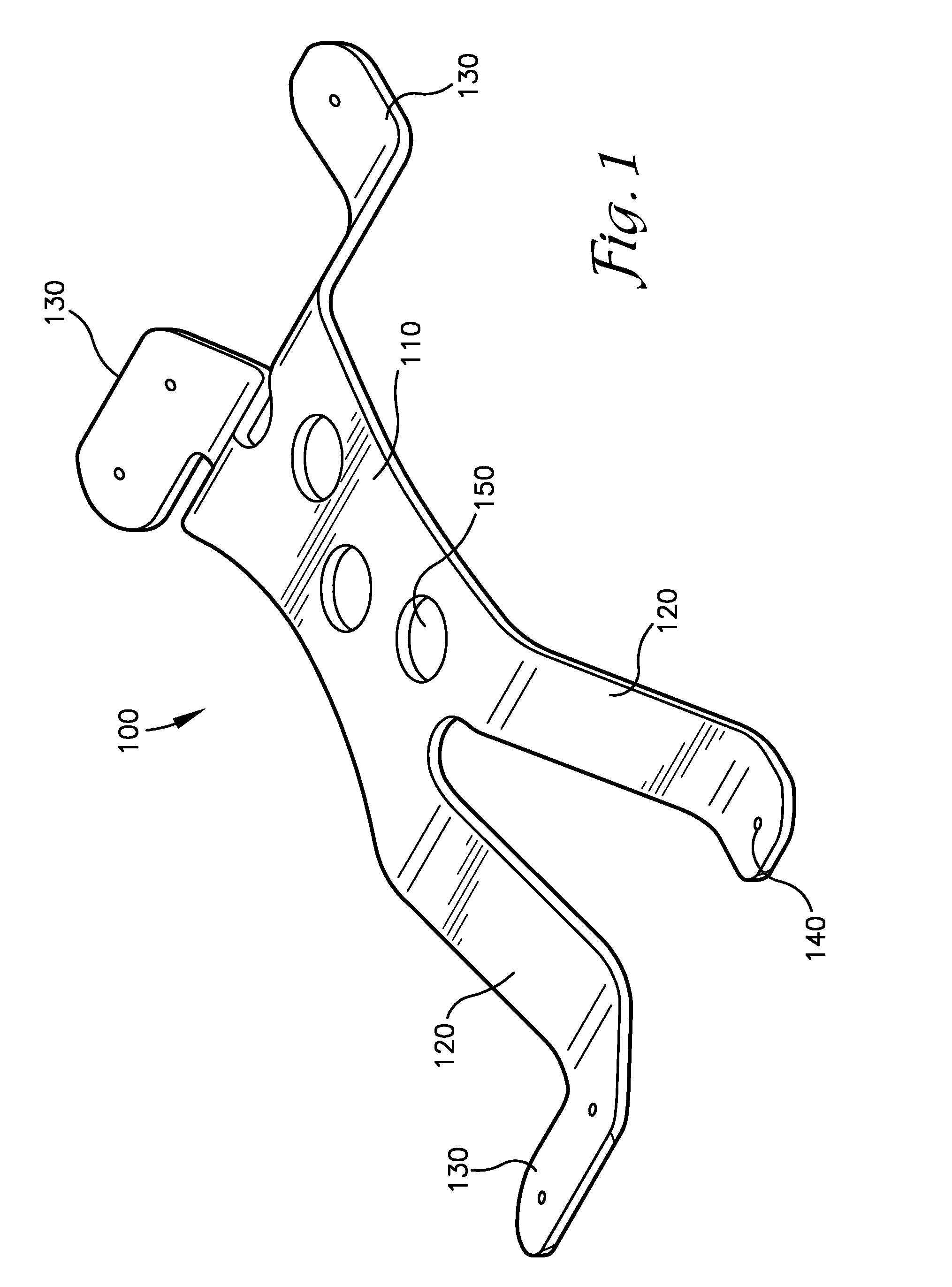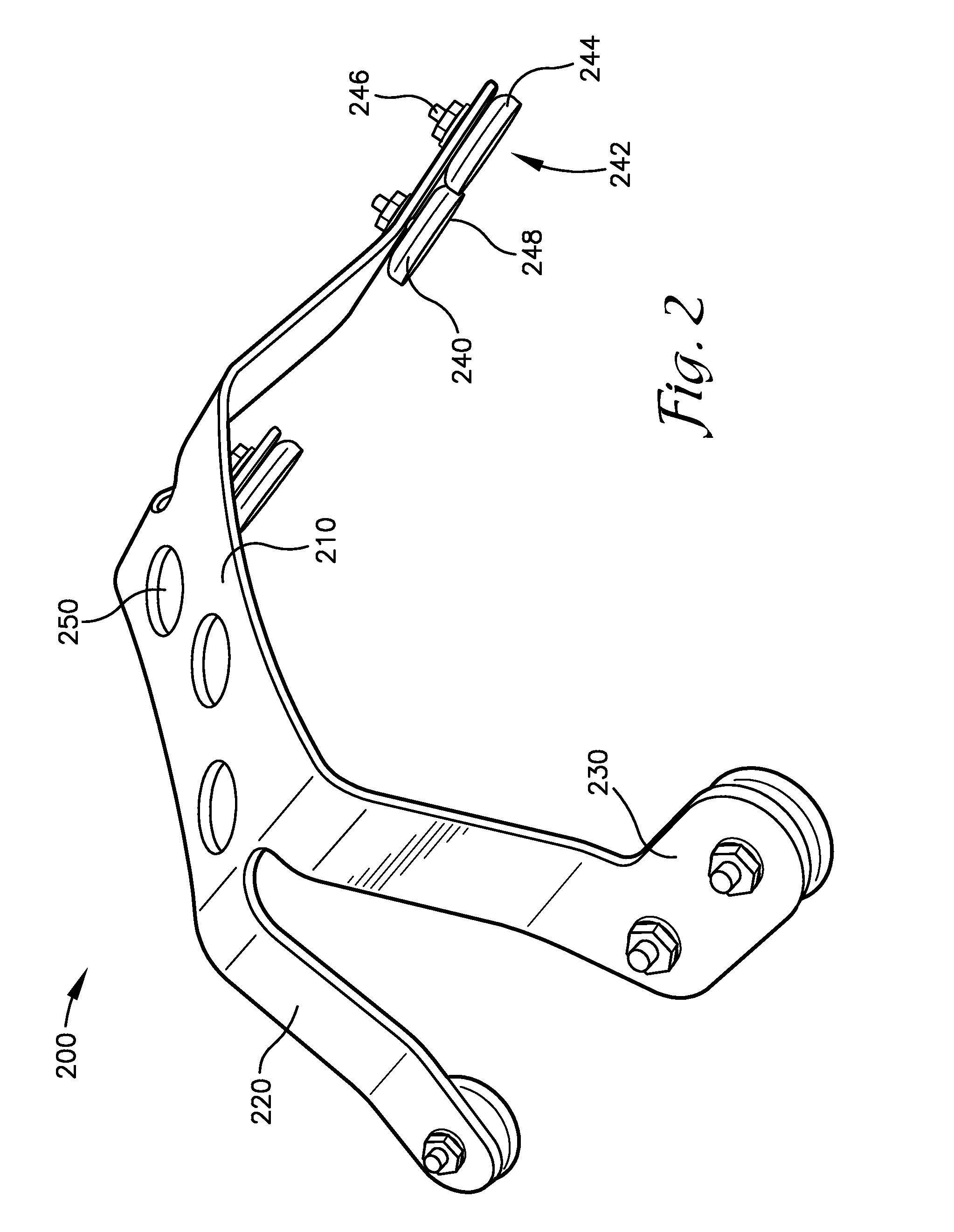Cable mounting bracket apparatus and system
a bracket and cable technology, applied in the direction of electrical equipment, pipe supports, securing devices, etc., can solve the problems of high cost, maintenance and/or structural damage, unsatisfactory working conditions for workers, etc., and achieve the effect of stable bracket and low aspect ratio
- Summary
- Abstract
- Description
- Claims
- Application Information
AI Technical Summary
Benefits of technology
Problems solved by technology
Method used
Image
Examples
first embodiment
[0033]As shown in FIG. 1, the bracket 100 disclosed herein is comprised of a center connecting member 110 detachably connected to two sets of two legs 120. The distal end of each leg 130 contains at least one hole 140 through which a fastening device may be passed through and the bracket 100 may be adhered to a structure. The bracket 100 is preferably fabricated from a 10 gauge stainless steel alloy, such as austenitic 304 stainless steel. 304 stainless steel is composed of a minimum of 18% chromium and 8% nickel, combined with a maximum of 0.08% carbon. The legs 120 extend outwardly and downwardly to create a bracket with a wide stance and a low aspect ratio. The hole in the center connecting member 150 has a diameter preferably in the range of 0.10 to 1.25 inches in order to facilitate engagement with industry standard “snap-in” cable clamps, bolts, flexible fasteners such as zip ties, or other fastening devices to secure components.
[0034]Because the curvature of the distal ends o...
second embodiment
[0035]As shown in FIG. 2, the bracket 200 disclosed herein is comprised of a center connecting member 210, four legs 220, at least one hole in the center connecting member 250, and at least one magnetic pad 240 attached to the distal end of each leg 230.
[0036]One embodiment of the magnetic pad 240 is comprised of a rare-Earth alloy magnet 242 and corrosion resistant steel socket 244 with a corrosion resistant stem 246. Rare-Earth magnets generally have the greatest magnetic field strength per weight ratio of permanent magnets currently and commonly available. The magnetic pads 240 are attached to the distal end of each leg 230 of the bracket 200 either by threading the stem 246 or by pushing the stem 246 through the structure of the bracket and subsequently securing the magnet assembly with a combination of rivet or locking washer, locking nut and / or chemical locking compound so that the magnetic pads 240 are solidly fixed. The steel socket 244 encases the magnet 242 and tends to ma...
PUM
 Login to View More
Login to View More Abstract
Description
Claims
Application Information
 Login to View More
Login to View More - R&D
- Intellectual Property
- Life Sciences
- Materials
- Tech Scout
- Unparalleled Data Quality
- Higher Quality Content
- 60% Fewer Hallucinations
Browse by: Latest US Patents, China's latest patents, Technical Efficacy Thesaurus, Application Domain, Technology Topic, Popular Technical Reports.
© 2025 PatSnap. All rights reserved.Legal|Privacy policy|Modern Slavery Act Transparency Statement|Sitemap|About US| Contact US: help@patsnap.com



